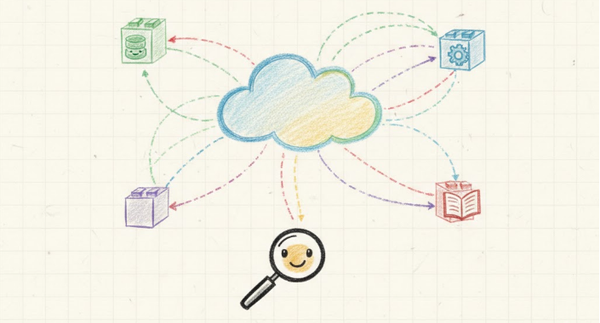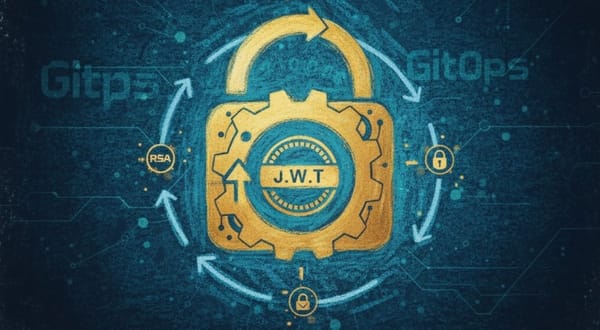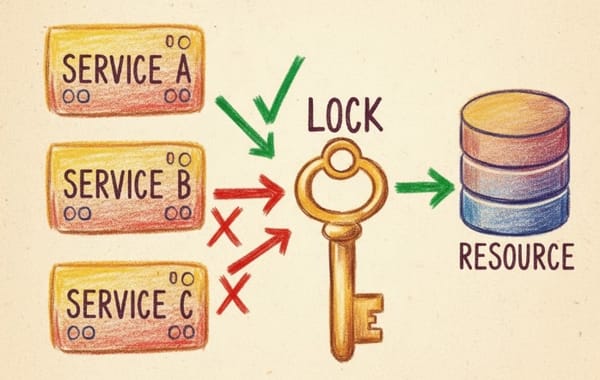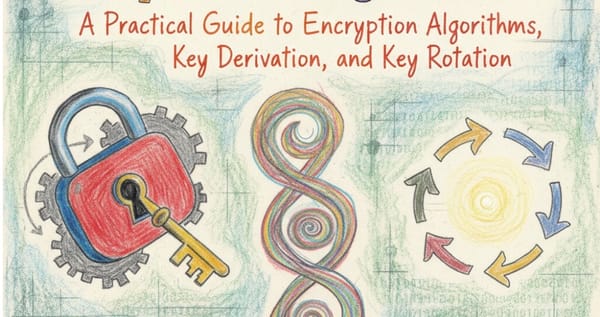Architecting for Agility: A Practical Dive into Event Sourcing and CQRS

As software architects, we're constantly seeking patterns that not only solve immediate problems but also pave the way for future flexibility. In the quest for scalable, maintainable, and highly responsive systems, two powerful patterns often come to the forefront: Event Sourcing and Command Query Responsibility Segregation (CQRS).
Having navigated the architectural landscape for multiple years, I've seen these patterns transform systems, but also understood the common pitfalls. Let's demystify them, moving from core concepts to real-world applications and considerations.
Event Sourcing: The Unchangeable Truth
Imagine your application's state not as a single, mutable snapshot, but as a continuous, immutable stream of events. That's the essence of Event Sourcing. Instead of updating a record in a database, every change to your application's state is stored as an event.
Core Concept:
- Events: Represent facts that have occurred in the system (e.g.,
OrderCreated,ProductAddedToCart,CustomerAddressUpdated). They are past-tense, immutable, and carry all the necessary data about the change. - Event Store: A specialized database optimized for storing and retrieving these event streams. It's an append-only log.
- Aggregates: Conceptual boundaries around a set of related events that enforce business invariants. An Aggregate's current state is derived by "replaying" its events.
Why it's Powerful:
- Auditing & Debugging: A complete, chronological history of every change makes debugging a breeze and provides an unparalleled audit trail.
- Temporal Queries: "What did the system look like last Tuesday at 2 PM?" – easily answered by replaying events up to that point.
- No Data Loss: Since events are facts, you never lose historical context.
- Decoupling: Events can be consumed by multiple services for various purposes, fostering loose coupling.
Here's a simplified look at how an Event Sourced system processes a command:

CQRS: Separating Concerns for Performance and Scalability
CQRS (Command Query Responsibility Segregation) is often paired with Event Sourcing, though they can exist independently. It's about separating the operations that change data (Commands) from the operations that read data (Queries).
Core Concepts:
- Commands: Intent-based messages that request a state change (e.g.,
PlaceOrder,UpdateCustomerProfile). They should be imperative. - Command Model (Write Model): The part of your system responsible for processing commands, validating business rules, and ultimately generating events (often Event Sourced). This model is optimized for writes and transactional consistency.
- Queries: Requests for data (e.g.,
GetProductDetails,ListCustomerOrders). - Query Model (Read Model): A specialized data store or view optimized purely for querying. It's denormalized, tailored to specific UI needs, and often eventually consistent with the Write Model.
Why it's Powerful:
- Scaling Independently: Write-heavy systems can scale the Command Model, while read-heavy systems can scale the Query Model, often using different database technologies for each.
- Optimized Models: The Write Model can focus on business logic and consistency, while Read Models can be highly denormalized and performant for specific query patterns.
- Flexibility: Easily add new Read Models for new query requirements without impacting the Write Model.
This diagram illustrates the separation of commands and queries, with the write model (often Event Sourced) driving updates to the read model:

A Real-World Scenario: E-Commerce Order Processing
The E-Commerce domain is a perfect fit for CQRS and Event Sourcing due to its high transaction volume, complex rules, and varied read requirements.
When a customer places an order, the flow leverages both patterns for maximum performance and auditing:
- Write/Command Path: A
PlaceOrderCommandis sent. The Order Aggregate validates the business rules and, if successful, generates anOrderCreatedevent. This event is appended to the Event Store, which serves as the single source of truth. - Decoupled Reactions: Other services immediately react to this fact:
- The Inventory Service consumes the
OrderCreatedevent and reserves stock, potentially publishing aStockReservedevent. - The Shipping Service consumes the event to initiate logistics planning.
- The Inventory Service consumes the
- Read/Query Path: To display the customer's order history, a specialized Read Model is used. An event consumer projects the various order events (like
OrderCreated,OrderShipped,OrderCancelled) into a single, denormalized document (perhaps in a NoSQL database like MongoDB or Elasticsearch). This view is optimized purely for rapid display on the user's "My Orders" page. - Advanced Consumers: A Fraud Detection service can consume all incoming events in real-time to build a rolling view of user behavior, enabling sophisticated, low-latency analysis that would be impossible if it had to query transactional tables.
In this scenario, the Write Model is simple, focused only on transactional integrity, while multiple, tailored Read Models serve specific query needs without slowing down the core transaction path.
Common Use Cases
- Complex Business Domains: E-commerce, financial systems, healthcare applications where domain events are rich and complex.
- High-Performance Reads: Dashboards, analytics, public-facing sites with heavy read loads.
- Microservices Architectures: Events provide a natural mechanism for inter-service communication and eventual consistency.
- Auditing and Compliance: Systems requiring a full, immutable history of all changes.
Common Issues & Considerations
- Complexity: There's no denying these patterns add conceptual and operational overhead. They're not for simple CRUD applications.
- Event Versioning: As your domain evolves, events will change. Managing backward and forward compatibility of events is crucial. This often involves strategies like event upcasters.
- Eventually Consistent Reads: Query models are typically updated asynchronously, meaning a read right after a write might not reflect the latest state. Your application and users need to be able to handle this.
- Projections (Read Model Generation): Building and maintaining the logic to project events into various read models can be intricate.
- Data Migrations: Evolving your domain models and event structures requires careful planning for migrating historical events.
- "Aggregate too large" / "Aggregate too small": Getting the aggregate boundary right is critical for performance and consistency. Too large, and you introduce contention; too small, and you lose transactional consistency.
A Practical Approach
Don't jump into Event Sourcing and CQRS for every project. Start small, perhaps with a single bounded context or a module where these patterns offer clear advantages.
- Identify Bounded Contexts: Use Domain-Driven Design principles to segment your domain.
- Focus on Key Aggregates: Start by event-sourcing a few critical aggregates.
- Iterate on Read Models: Build read models as needed for specific query requirements. You might not need CQRS for every part of your system.
Conclusion
Event Sourcing and CQRS are powerful architectural tools that, when applied judiciously, can lead to highly scalable, maintainable, and observable systems. They shift our perspective from mutable state to immutable facts, enabling capabilities like unparalleled auditing, temporal querying, and independent scaling. While they introduce complexity, the long-term benefits for complex, evolving domains often outweigh the initial investment.



